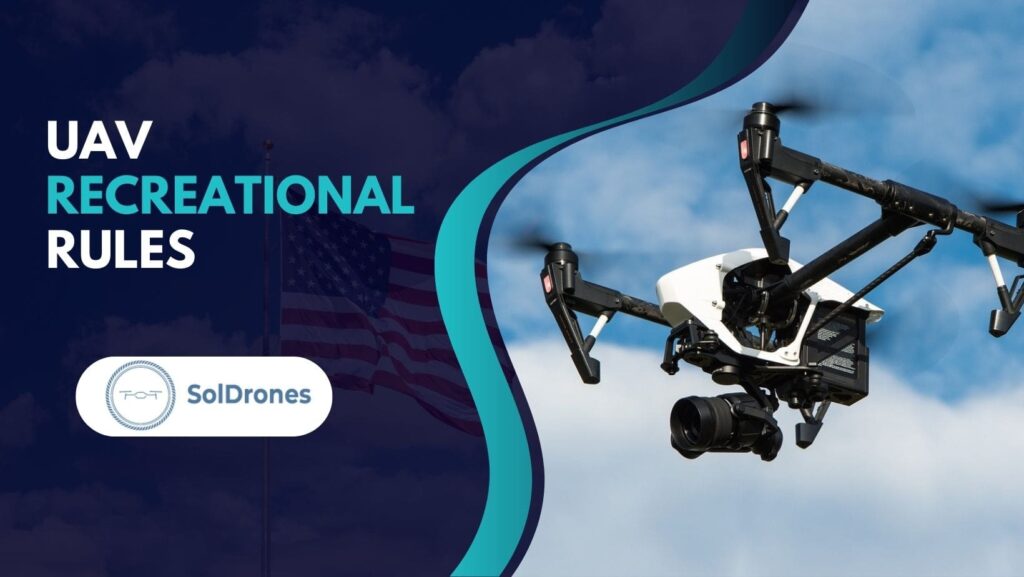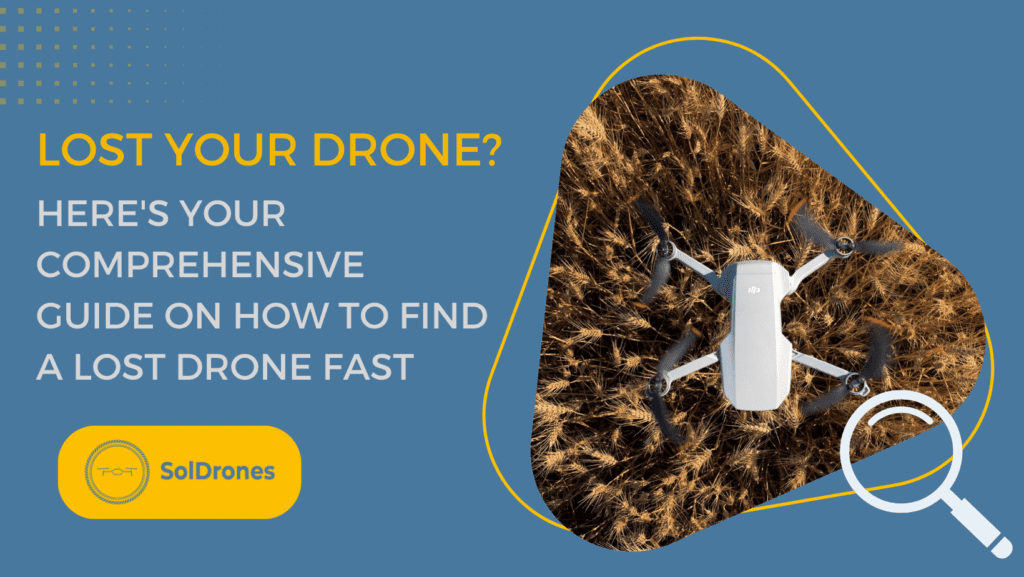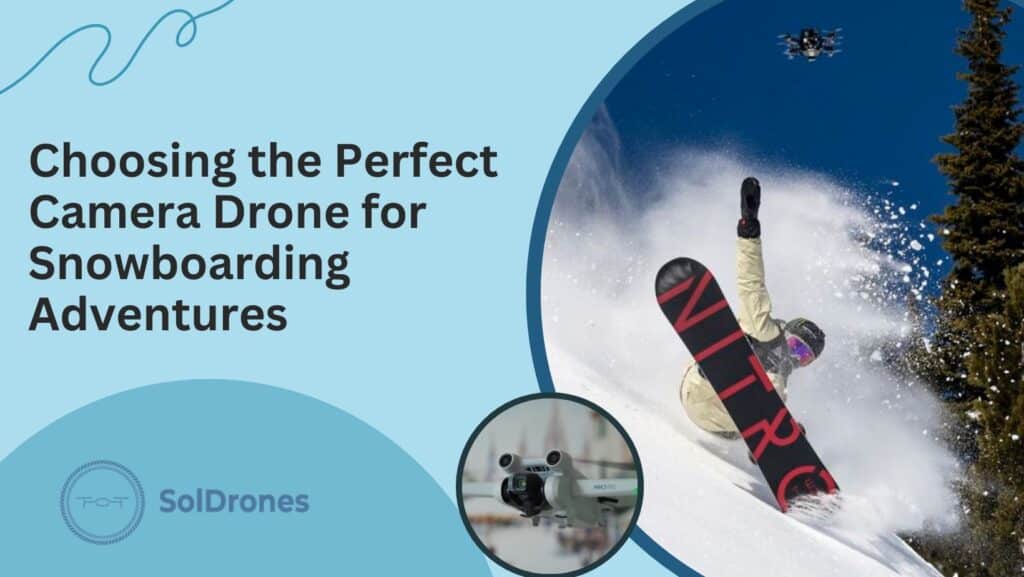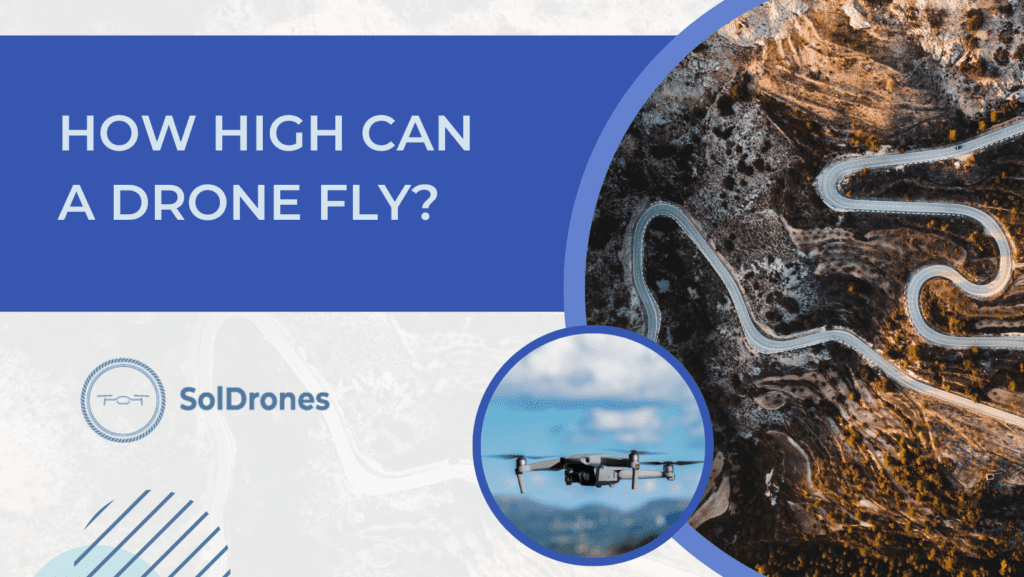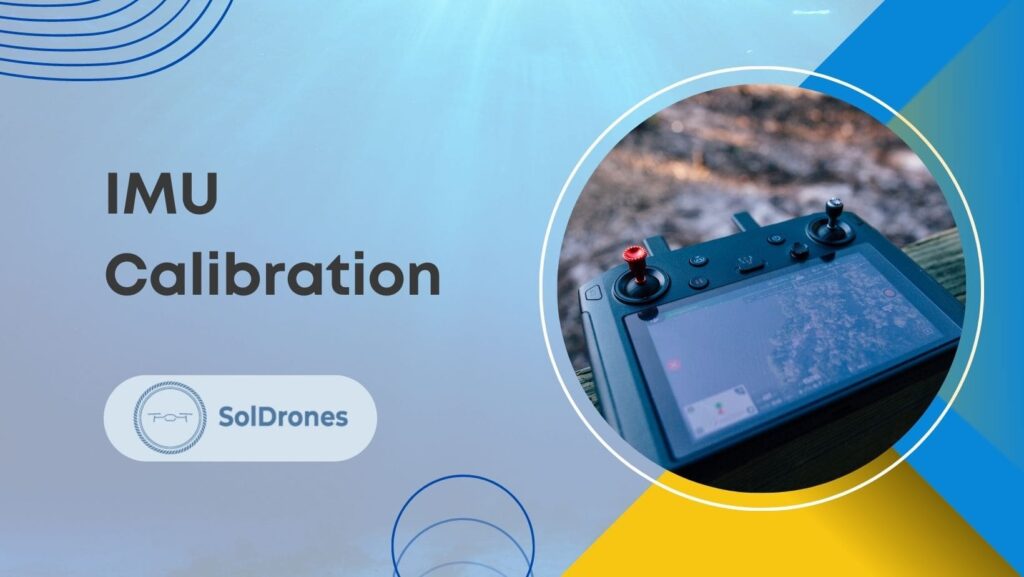The increasing popularity of recreational drones (UAVs) offers amazing opportunities for photography and exploration.
However, it’s important to understand that the United States has specific UAV recreational rules that drone pilots must follow.
These regulations vary by state, ensuring safety and responsible operation.
Before launching your drone, familiarize yourself with recreational drone regulations in your area to avoid potential fines or airspace violations.
In need of a landing pad? Here’s a top choice from pilots like you:
- Auto-Spring Shape: Springs into shape for immediate use.
- Dust & Debris Prevention: High-visibility orange design minimizes flying debris.
- Weighted Perimeter: 3.2 lb galvanized-steel ensures stability without stakes.
Article Highlights:
- Understanding Regulations: The surge in recreational UAV use necessitates familiarity with both federal and state-specific regulations to ensure safe and legal flying.
- Recreational vs. Commercial: Distinguishing between recreational and commercial drone use is vital, as each category has distinct rules regarding registration, airspace access, and operational limits.
- Safety and Compliance: Adhering to FAA guidelines, including registering drones over 0.55 lbs, completing the TRUST test, and observing operational rules, is essential for all recreational pilots to maintain airspace safety and avoid penalties.
Credits: Legal Eaz
What is a Recreational Flight?
In the context of Unmanned Aerial Vehicles (UAVs) or drones in the National Airspace System of the United States, a recreational flight refers to flying a drone for personal enjoyment and not for commercial purposes.
This means the pilot operates the UAV without any intention of financial gain or in support of business activities.
The primary aim is leisure or hobby interests, such as photography for personal use, flying at a local park, or participating in a hobbyist drone racing event.
Recreational flyers are expected to follow specific FAA drone guidelines, including registering drones, flying below altitude limits, and avoiding restricted airspace.
The distinction between recreational and commercial drone use is crucial for regulatory and compliance purposes, with each category subject to different rules and requirements.
What it is:
- Flying for Personal Enjoyment: Recreational flights are all about flying for pleasure or hobby purposes. You’re not getting paid, providing a service, or furthering any business goals.
- Limited Scope: Think of it as flying for the pure joy of flying – photography, sightseeing, exploring, etc.
Recreational vs Commercial Drones
| Feature | Recreational | Commercial |
| Purpose | Fun, hobby, personal use | Business, work, compensation |
| Compensation | None | Payment, profit, furthering business goals |
| Regulations | FAA Exception for Limited Recreational Use | FAA Part 107 |
| Pilot Certification | TRUST Certificate | Remote Pilot Certificate (Part 107 License) |
What are the General Recreational Drone Flying Rules For All Drone Pilots?
Here’s a breakdown of the drone laws for hobbyists that every recreational UAV pilot in the USA must follow.
Crucial Requirements
- FAA Registration: Drones weighing more than 0.55 lbs (250 grams) must be registered with the FAA. You’ll receive a registration number to display on your drone.
- TRUST Certificate: All recreational drone pilots must complete The Recreational UAS Safety Test (TRUST) pass the initial aeronautical knowledge exam with knowledge of educational safety material, and carry proof of completion when flying.
Operational Rules
- Line of Sight: Always keep your drone within your visual line of sight.
- Maximum Altitude: Drones must fly at or below 400 feet above ground level.
- Yielding Right of Way: Always give way to manned aircraft and never interfere with their operations.
- Controlled Airspace: You cannot fly in controlled airspace (near airports, etc.) without prior authorization from the FAA using systems like LAANC or DroneZone.
- No Drone Zones: Respect any areas designated as “No Drone Zones“, such as national parks or near sensitive locations.
Important Notes:
- State and Local Rules: Individual states and municipalities might have additional regulations. Always check before you fly.
- Remote ID: Starting March 16th, 2024, drones requiring FAA registration must also broadcast Remote ID unless flown in dedicated FAA-recognized Identification Areas (FRIAs).
What are the Drone Regulations for Recreational Pilots?
The Federal Aviation Administration (FAA) sets forth specific regulations for recreational drone pilots in the USA under the Exception for Limited Recreational Operations of Unmanned Aircraft.
It’s essential for recreational drone flyers to stay updated with the FAA’s latest guidelines as these regulations evolve.
Here are the key rules recreational drone pilots need to follow:
- Registration: Drones weighing over 0.55 pounds (250 grams) and less than 55 pounds must be registered with the FAA, and the registration number must be marked on the outside of the drone.
- Aeronautical Knowledge and Safety Test: Recreational pilots must pass the Recreational UAS Safety Test (TRUST) and carry proof of test passage while flying.
- Fly for Hobby or Recreation Only: The drone must be operated strictly for recreational purposes.
- Follow the Safety Guidelines: Pilots must follow the safety guidelines developed by a community-based organization (CBO).
- Visual Line-of-Sight (VLOS): Drones must be kept within the visual line of sight or, if using a visual observer, within the line of sight of the visual observer who is co-located (physically next to) and in direct communication with the drone pilot.
- Do Not Interfere with Manned Aircraft: It’s essential to avoid interference with manned aircraft operations and yield the right of way to manned aircraft.
- Fly in Class G Airspace: Under prior authorization, recreational drones can operate in Class G (uncontrolled) airspace. For flights in controlled airspace (Class B, C, D, and E), pilots must obtain authorization through the Low Altitude Authorization and Notification Capability (LAANC) system or designated flying sites with established agreements with the FAA.
- No Flying in Restricted Airspace: This includes areas such as Washington D.C., near airports, and other national security-sensitive locations.
- Do Not Fly Over People or Moving Vehicles: There are airspace restrictions on flying over people or moving vehicles unless the drone meets specific criteria set forth by the FAA.
- No Drugs or Alcohol: Do not operate a drone while under the influence of drugs or alcohol.
- Night Operations: Recreational pilots can fly at night if their drones have lighting that allows them to know its location and orientation at all times.
- Maximum Altitude: If you fly drones, they should not be flown higher than 400 feet above ground level (AGL) unless flying in controlled airspace where the FAA allows higher flights.
Always check the FAA website or other official FAA resources for the most current information and additional details about recreational drone regulations, as rules and requirements can change.
FAA New Rules and Drone Laws in the U.S.
Here’s a breakdown of the most significant recent FAA new rules and drone laws affecting both recreational and commercial drone use in the U.S.:
Remote ID
- What it is: Remote ID is like a digital drone license plate. It requires drones to broadcast identification information, including the drone’s serial number, location, altitude, and the control station’s location.
- Timeline: The UAV flight rules, including the Remote ID regulation, have been effective since September 16th, 2023. However, there’s a compliance deadline of March 16th, 2024, by which time drones will require one of the following capabilities:
- Standard Remote ID broadcast module
- Operation within an FAA-recognized Identification Area (FRIA)
- Operation as a “limited” drone which may only be flown under an exception for very specific use cases (requires an application to the FAA).
- Why it matters: Remote ID enhances airspace safety and security. It helps track drones operating in sensitive areas and identify pilots flying unsafely.
Operations Over People (OOP) and at Night
- What it is: The FAA recently finalized rules allowing certain “Part 107” certified commercial drone pilots to fly over people and at night under specific conditions.
- Requirements: Specific drone equipment and operational procedures are required for both operations over people and night flying.
- Why it matters: These FAA new rules open up a broader range of commercial use cases for drones, including newsgathering, infrastructure inspection, and delivery services.
Beyond Visual Line of Sight (BVLOS) Operations
- What it is: BVLOS refers to flying a drone beyond the pilot’s visual range. These operations are currently very limited and require special waivers from the FAA.
- The future: The FAA is working on a framework to allow routine BVLOS operations. This could revolutionize industries like package delivery and long-range inspections.
Where to Find the Latest Information:
- FAA’s UAS Website: https://www.faa.gov/uas is the most up-to-date source for regulatory information
- Drone Industry News Outlets: Websites like DroneLife or Commercial UAV News track regulatory updates.
How to Register My Drone With FAA
Here’s a step-by-step guide on how to register your drone with the FAA, along with the requirements:
Requirements
- Weight: Your drone must weigh more than 0.55 pounds (250 grams) and less than 55 pounds to be eligible for online registration.
- Age: You must be at least 13 years old to register a drone.
- Residency: US resident or legal permanent resident
The Registration Process
- Create an Account on FAADroneZone:
- Visit the FAADroneZone website: https://faadronezone.faa.gov/
- Click on “Register” or “Create an Account”
- Choose “Recreational Flyer” if you’re only flying for fun.
- Provide Personal Information:
- Enter your name, email address, and physical address.
- Register Your Drone(s):
- Add a new drone in your inventory
- Provide the following information:
- Manufacturer and model
- Serial number (usually found on the drone’s body, often within the battery compartment)
- You can register multiple drones under one account.
- Pay the Fee:
- The registration fee is $5 per drone.
- The registration remains valid for three years.
- Receive and Display Your Registration Number:
- Upon successful registration, the FAA will issue a unique registration number.
- You must mark this number clearly on the exterior of every drone you register.
Important Notes:
- Renewing Registration: Your drone registration needs renewal every three years.
- Commercial Use: Drones used for any commercial purpose must be registered under a different process (Part 107).
Do I Need A License To Fly A Drone For Fun?
Recreational (or hobbyist) drone pilots do not need a traditional “license” similar to those required for commercial drone operations.
However, there are specific requirements set by the Federal Aviation Administration (FAA) that recreational drone pilots must follow:
- Registration: If your drone weighs more than 0.55 pounds (250 grams) and less than 55 pounds, you must register it with the FAA. The registration number must be clearly marked on the outside of the drone.
- The Recreational UAS Safety Test (TRUST): While not a license, the FAA requires all recreational drone pilots to pass the Recreational UAS Safety Test (TRUST). TRUST provides important safety information and ensures that recreational pilots understand the rules and regulations of flying drones in the U.S. airspace. Once completed, you will receive a completion certificate, which you must be able to present if requested by authorities.
- Follow Recreational Flying Rules: Besides passing TRUST and registering your drone (if applicable), you must adhere to the FAA’s safety guidelines for recreational drone flights. This includes flying below 400 feet in uncontrolled airspace, keeping the drone within visual line-of-sight, not flying over people or moving vehicles, and more.
While these requirements do not constitute a license per se, they are mandatory for all recreational drone pilots to ensure safe and responsible flying.
Compliance with these rules is essential for the safety of all airspace users.
Final Thoughts
The increasing interest in recreational drones across the United States highlights the blend of innovation and responsibility within the realm of UAVs.
Each state may have nuanced regulations that complement federal guidelines, emphasizing the importance of understanding local laws to ensure safe and lawful drone operations.
Before you embark on your next aerial adventure, understanding recreational drone regulations and FAA drone guidelines can help you avoid legal issues and fines.
Whether your interest lies in capturing breathtaking landscapes, engaging in drone racing, or simply exploring the skies, compliance with these rules ensures that the skies remain safe for everyone.
For enthusiasts and hobbyists alike, the key to enjoying the vast potential of recreational drones lies in responsible flying and a commitment to safety.
Remember, a well-informed pilot is not only a compliant pilot but also a contributor to the positive growth of this exciting hobby.

